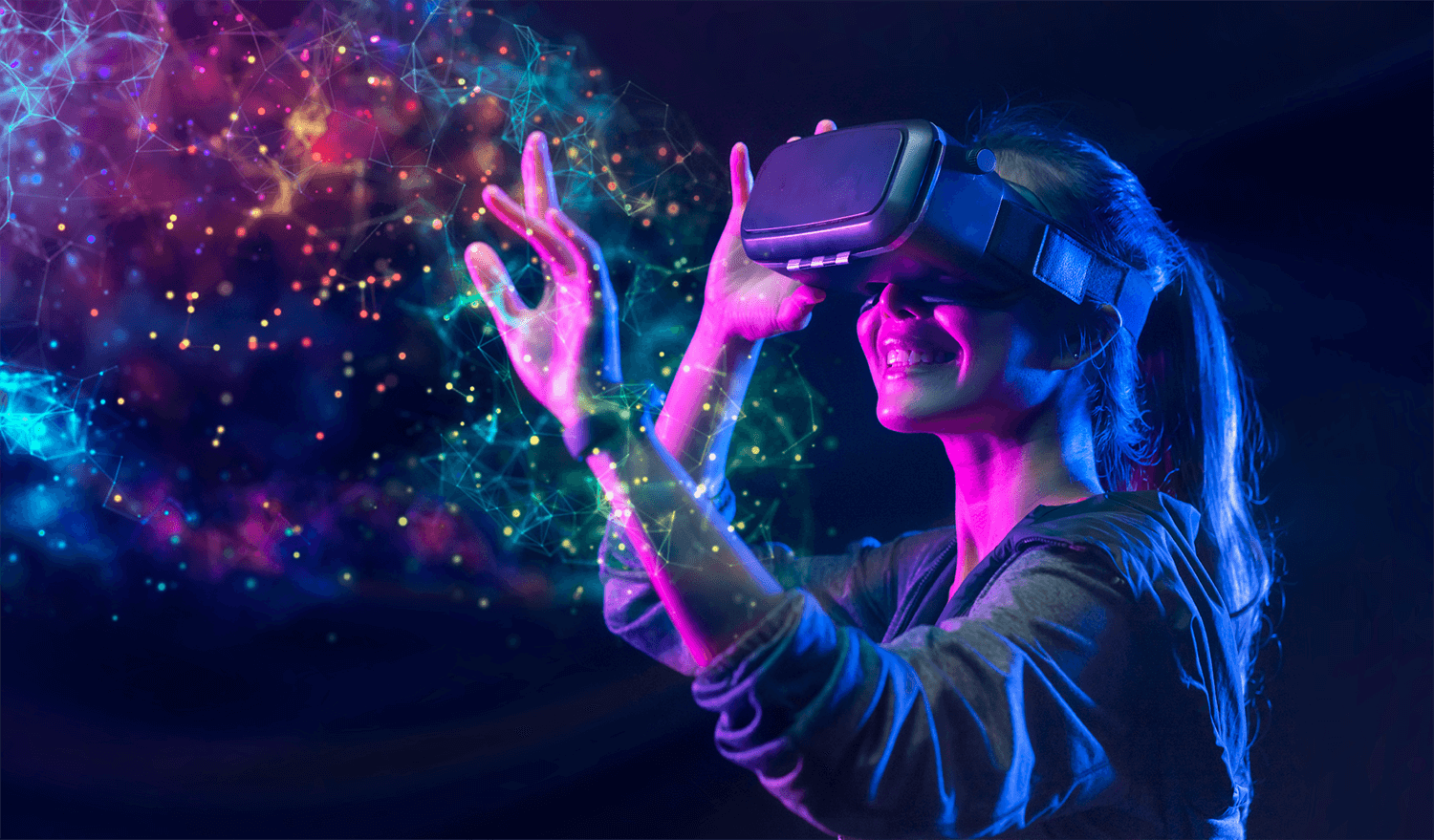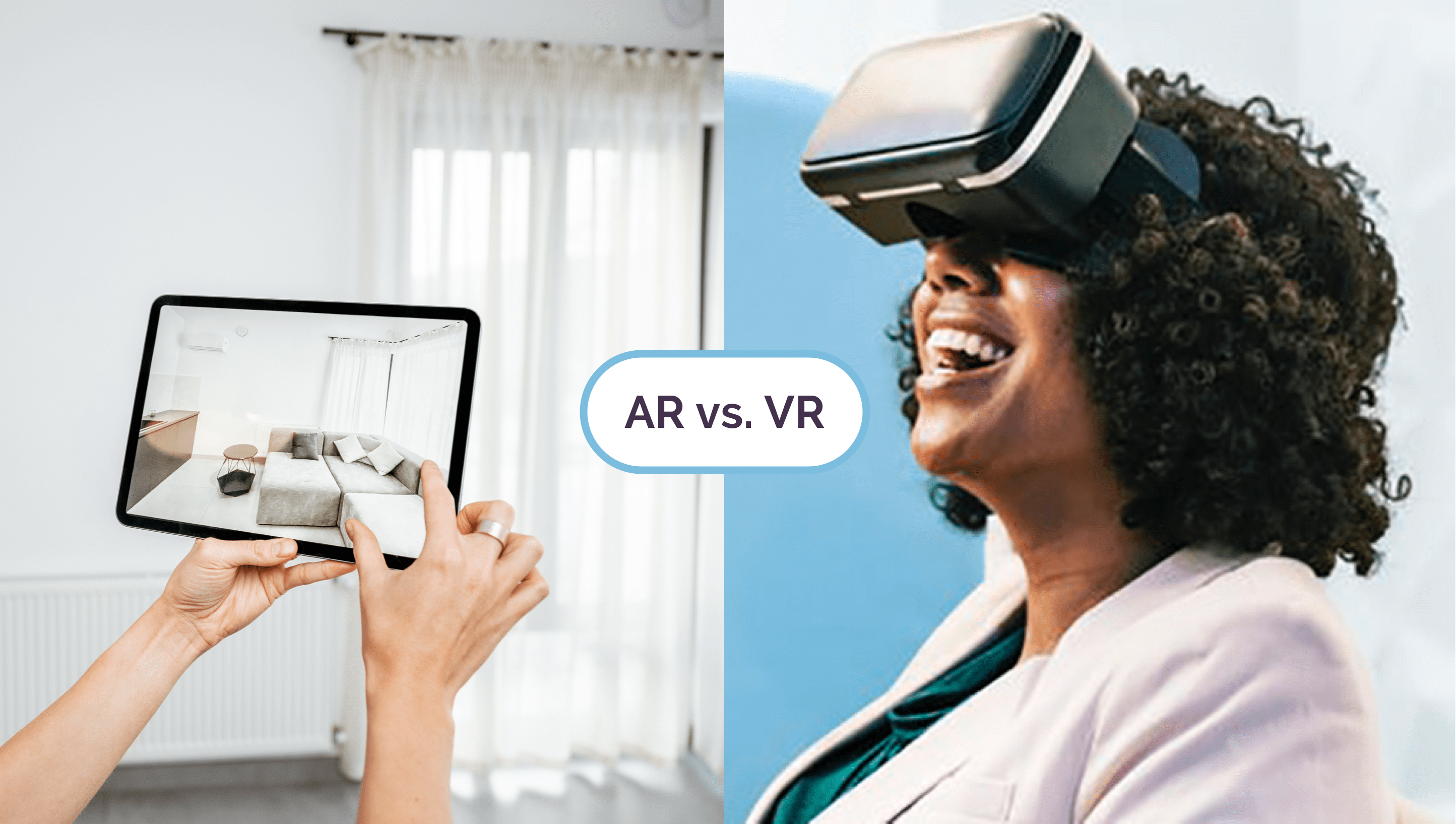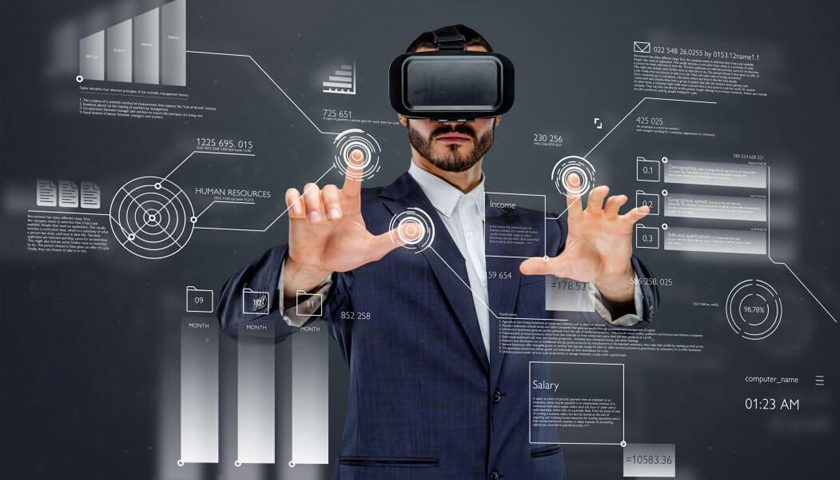
Using Virtual Reality and Augmented Reality for Marketing Campaigns
In the fast-paced world of marketing, staying ahead of the curve is essential for brands aiming to captivate their audience. Traditional advertising methods are becoming less effective as consumers demand more immersive and engaging experiences. This is where virtual reality (VR) and augmented reality (AR) step in as game-changers. By integrating VR and AR into marketing campaigns, brands can create unforgettable experiences that leave a lasting impression on consumers. In this blog post, we’ll explore how VR and AR are revolutionizing marketing and discuss some innovative ways brands can leverage these technologies to drive engagement and increase brand awareness.
Understanding Virtual Reality and Augmented Reality

Before delving into their marketing applications, let’s briefly distinguish between virtual reality (VR) and augmented reality (AR).
Virtual Reality (VR): VR immerses users in a completely virtual environment, shutting out the physical world. Users typically experience VR through headsets that track their head movements, allowing them to interact with and navigate the virtual space.
Augmented Reality (AR): AR overlays digital content onto the real world, enhancing the user’s perception of their surroundings. AR experiences can be accessed through smartphones, tablets, or AR glasses, enabling users to interact with digital elements superimposed onto their physical environment.
Virtual reality and augmented reality represent two distinct but closely related technologies that are transforming various industries, including marketing. While both VR and AR offer immersive experiences, they differ in terms of the user’s interaction with the digital environment.
In virtual reality, users are fully immersed in a simulated environment, often with limited interaction with the physical world. VR experiences transport users to entirely new worlds, allowing them to explore, interact, and engage with virtual objects and environments.
On the other hand, augmented reality enhances the user’s real-world environment by overlaying digital content onto it. AR experiences blend virtual elements seamlessly with the physical world, providing users with contextually relevant information or interactive features.
From a marketing perspective, understanding the distinctions between VR and AR is crucial for designing effective campaigns that leverage the unique capabilities of each technology. While VR excels at creating immersive storytelling experiences and simulations, AR is ideal for enhancing real-world interactions and providing personalized content.
Brands can utilize virtual reality to transport consumers to virtual environments related to their products or services. For example, a travel agency could offer virtual tours of exotic destinations, allowing users to explore and experience their potential vacation destinations from the comfort of their homes.
Augmented reality, on the other hand, enables brands to overlay digital content onto the physical world, creating interactive and engaging experiences for users. For instance, retailers can use AR to offer virtual try-on experiences, allowing customers to visualize how products will look in their homes before making a purchase.
In conclusion, while virtual reality and augmented reality share some similarities, they offer distinct experiences and capabilities that can be harnessed to create innovative and immersive marketing campaigns. By understanding the unique characteristics of VR and AR, brands can leverage these technologies to engage consumers in compelling ways and differentiate themselves in an increasingly competitive market landscape.
The Rise of VR and AR in Marketing
Virtual Reality (VR) and Augmented Reality (AR) technologies have experienced a significant surge in popularity and adoption in recent years, fueled by notable advancements in hardware and software capabilities. This surge has been facilitated by several factors, including the increasing accessibility and affordability of VR and AR devices, as well as the growing demand for more immersive and engaging experiences among consumers. As a result, marketers across various industries are increasingly integrating VR and AR into their campaigns to deliver unique and captivating experiences to their target audience.
Advantages of VR and AR in Marketing Campaigns

- Engagement: One of the most prominent advantages of VR and AR in marketing campaigns is their ability to captivate users’ attention and keep them engaged for extended periods compared to traditional advertising methods. By immersing users in interactive and visually compelling experiences, VR and AR can effectively capture and retain the interest of consumers, leading to higher levels of engagement with the brand.
- Memorability: Immersive experiences created through VR and AR have a profound impact on consumers, leaving a lasting impression that makes brands more memorable. By providing users with memorable experiences that resonate with them emotionally, VR and AR can increase brand recall and recognition, ultimately enhancing the likelihood of conversion and brand loyalty.
- Personalization: VR and AR technologies enable brands to deliver personalized content tailored to individual preferences and behaviors, thereby enhancing the overall user experience. Through data-driven insights and advanced targeting capabilities, marketers can create highly customized VR and AR experiences that resonate with users on a personal level, fostering a deeper connection with the brand.
- Interactivity: VR and AR offer users the opportunity to interact with virtual objects and environments in real-time, fostering a sense of participation and engagement. By allowing users to actively engage with content and manipulate virtual elements, VR and AR experiences can create a more immersive and interactive brand experience, driving deeper levels of engagement and interaction.
- Storytelling: VR and AR provide unique storytelling opportunities for brands to convey their message in a compelling and immersive manner. By leveraging the immersive capabilities of VR and AR, marketers can transport users to virtual worlds and narratives that evoke emotion, inspire action, and create memorable brand experiences.
In summary, the rise of VR and AR in marketing has opened up exciting possibilities for brands to create immersive, engaging, and personalized experiences that resonate with consumers on a deeper level. By harnessing the unique advantages of VR and AR, marketers can captivate audiences, drive engagement, and ultimately, differentiate their brand in a crowded marketplace. As VR and AR technologies continue to evolve and become more accessible, their role in marketing campaigns is poised to expand further, offering brands new avenues for creativity, innovation, and consumer engagement
Innovative Uses of VR and AR in Marketing
Now, let’s explore some creative ways brands are leveraging VR and AR to enhance their marketing campaigns:
- Virtual Try-On Experiences
Retailers can utilize AR technology to offer virtual try-on experiences, allowing customers to visualize how products will look on them before making a purchase. This approach is particularly effective in the fashion and beauty industries, where consumers value trying products before buying.
- Immersive Brand Experiences
Brands can create immersive VR experiences that transport users to virtual environments related to their products or services. For example, a travel agency could offer virtual tours of exotic destinations, giving users a taste of their potential vacation experiences.
- Interactive Product Demonstrations
AR can be used to enhance product demonstrations by overlaying interactive 3D models onto physical products. This enables users to explore product features and functionalities in-depth, leading to a better understanding of the product’s value proposition.
- Gamified Marketing Campaigns
Gamification is a powerful tool for driving engagement, and VR and AR provide the perfect platforms for immersive gaming experiences. Brands can develop interactive games that incorporate their products or brand messages, enticing users to participate and share their experiences with others.
- Virtual Events and Experiences
With the rise of remote work and virtual communication, brands can host virtual events and experiences using VR technology. Whether it’s a product launch, trade show, or conference, virtual environments offer endless possibilities for connecting with audiences in a more engaging and interactive way.
Case Studies: Success Stories in VR and AR Marketing

Let’s take a closer look at some real-world examples of brands that have successfully implemented virtual reality (VR) and augmented reality (AR) in their marketing campaigns, showcasing the transformative power of these technologies in engaging consumers and driving brand awareness.
- IKEA Place – Augmented Reality Furniture Shopping
IKEA Place is an innovative augmented reality (AR) app developed by the Swedish furniture giant IKEA. The app allows users to visualize how furniture will look in their homes before making a purchase. By leveraging AR technology, IKEA enhances the shopping experience by enabling users to virtually place furniture items in their living spaces, providing accurate size and scale representations. This immersive and interactive approach not only empowers customers to make informed purchasing decisions but also reduces the likelihood of returns, ultimately driving sales and enhancing customer satisfaction.
- Pokémon GO – Augmented Reality Gaming Phenomenon
Pokémon GO is a prime example of how augmented reality (AR) can be used to create a global gaming phenomenon. Developed by Niantic in collaboration with Nintendo and The Pokémon Company, Pokémon GO utilizes AR technology to overlay digital Pokémon onto real-world locations, encouraging players to explore their surroundings and interact with other players. The game’s innovative use of AR not only captivated millions of players worldwide but also drove significant social interaction and engagement. By seamlessly blending virtual elements with the physical world, Pokémon GO demonstrated the immense potential of AR in creating immersive gaming experiences and fostering community engagement.
- The North Face – Virtual Reality Outdoor Adventures
The North Face, a leading outdoor apparel and equipment company, leveraged virtual reality (VR) technology to transport users to Yosemite National Park, allowing them to experience the thrill of rock climbing firsthand. Through its immersive VR experience, The North Face not only promoted its outdoor gear but also highlighted the brand’s commitment to adventure and exploration. By providing users with a virtual taste of outdoor activities, The North Face effectively engaged its target audience and reinforced its brand identity as a provider of high-quality outdoor experiences.
- Pepsi Max – Augmented Reality Bus Shelter Campaign
Pepsi Max launched an innovative augmented reality (AR) campaign that transformed ordinary bus shelters into interactive experiences. Passersby were surprised to see virtual creatures and UFOs through the shelter’s windows, creating an unforgettable and shareable moment. This immersive AR experience generated significant buzz on social media and garnered widespread attention, effectively increasing brand visibility and engagement. By leveraging AR technology in a creative and unexpected way, Pepsi Max successfully captured the imagination of consumers and created a memorable brand experience.
- L’Oreal Makeup Genius – Augmented Reality Beauty App
L’Oreal’s Makeup Genius app is a groundbreaking augmented reality (AR) application that enables users to virtually try on makeup products in real-time. By leveraging facial recognition technology, the app accurately applies virtual makeup to users’ faces, allowing them to experiment with different looks before making a purchase. This interactive and personalized shopping experience not only drives engagement but also increases sales for L’Oreal by providing users with a fun and innovative way to explore its product offerings.
These case studies demonstrate the diverse applications of virtual reality (VR) and augmented reality (AR) in marketing campaigns, showcasing their ability to create immersive experiences, drive engagement, and increase brand visibility. By harnessing the power of VR and AR technologies, brands can differentiate themselves in a crowded marketplace and connect with consumers on a deeper level, ultimately driving business success and fostering brand loyalty. As VR and AR continue to evolve and become more accessible, their role in marketing strategies is expected to grow, offering brands new opportunities for creativity, innovation, and consumer engagement.
Conclusion
In conclusion, virtual reality (VR) and augmented reality (AR) are transforming the marketing landscape, providing brands with unprecedented opportunities to engage consumers in innovative and immersive ways. By harnessing the power of VR and AR technologies, brands can create unforgettable experiences that captivate audiences, foster deeper connections, and ultimately drive business success.
As VR and AR technologies continue to evolve, marketers must remain vigilant and adapt their strategies to leverage the latest advancements effectively. Staying abreast of emerging trends and exploring new applications of VR and AR in marketing campaigns will be essential for brands looking to maintain a competitive edge in the ever-changing digital landscape.
The future of marketing undoubtedly lies in virtual and augmented reality, and brands that embrace these technologies early on will undoubtedly reap the rewards in the years to come. By incorporating VR and AR into their campaigns, brands can create unique and immersive experiences that resonate with consumers, enhance brand awareness, and ultimately drive long-term customer loyalty. As the technology continues to mature and become more accessible, the possibilities for innovation and creativity in marketing are limitless, signaling a promising future for VR and AR in the marketing industry.


